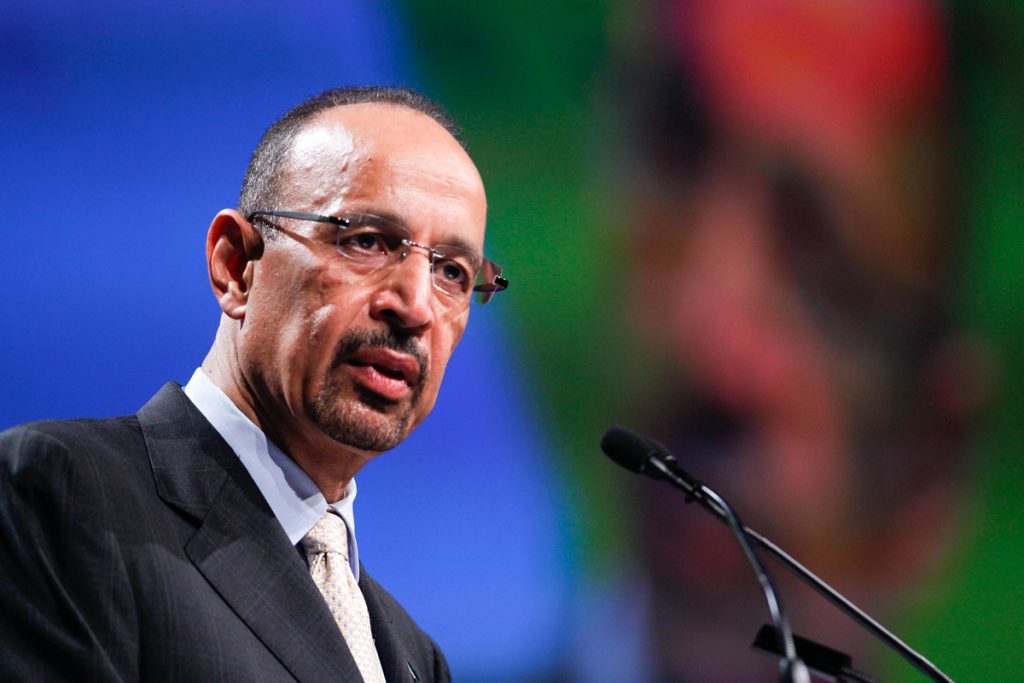
Saudi Arabia’s oil minister said he’s confident that an agreement by producers to curb crude output and shrink a market glut will be extended into the second half of the year and possibly beyond.
While U.S. shale output growth and the shutdown of refineries for maintenance have slowed the impact of cuts by OPEC and its partners, producers are determined to reach their goal of reducing bloated stockpiles, Khalid Al-Falih said at the Asia Oil and Gas Conference in Kuala Lumpur on Monday. He said he’s confident the global oil market will soon rebalance and return to a “healthy state.”
Surging U.S. production has raised concern the Organization of Petroleum Exporting Countries and partners are failing to reduce an oversupply and prop up prices. Oil has surrendered all its gains since their deal late last year to cut output and with OPEC meeting in Vienna later this month, several nations have said they’d support an extension of the 6-month agreement that began in January. This is the first time the Saudi minister has suggested it could be extended beyond 2017.
“Based on the consultations I have had with participating members I am rather confident the agreement will be extended into the second half of the year and possibly beyond,” Al-Falih said. “The producer coalition is determined to do whatever it takes to achieve our target of bringing stock levels back to the five-year average.”
West Texas Intermediate crude rose 1.2 percent to $46.76 a barrel by 12:20 p.m. Singapore time on the New York Mercantile Exchange. Brent, the benchmark for more than half the world’s oil, was up 1.3 percent to $49.73 a barrel on the London-based ICE Futures Europe exchange. Both are still more than 50 percent below their peaks in 2014, when the U.S. shale boom exacerbated a market glut and triggered the biggest price crash in a generation.
Al-Falih said last month that OPEC and its partners have failed, after three months of limiting output, to achieve their target of reducing oil inventories below the five-year historical average. Group member United Arab Emirates said earlier in May that the producer group should extend the collective production cuts into the second half of the year when an expected upturn in demand will help to re-balance the crude market.
Vienna Meeting
Russia, which is not member of OPEC but is part of the deal, also thinks it will be necessary to extend the reduction deal, according to Energy Minister Alexander Novak. The producers agreed last year to curb output by as much as 1.8 million barrels a day starting January. OPEC will meet in Vienna on May 25 to decide whether to prolong the deal beyond June.
While the producers curbed supply, production in the U.S., which is not part of the agreement, has risen to the highest level since August 2015 as drillers pump more from shale fields. But American crude inventories are showing some signs of shrinking, falling for the past four weeks from record levels at the end of March.
Despite lingering headwinds, the oil market is improving from early last year when markets were at a low, Al-Falih said. Stockpiles at sea have declined and U.S. inventories will continue their downward trend, he said. Global demand, meanwhile, will probably be stable from the “healthy rate” seen last year, driven by China and India, the Saudi minister said, adding that Asia was the most important market.
There’s about 20 million barrels a day of combined demand growth and natural oil-field output declines that need to be offset, Al-Falih said. “No matter how fast U.S. shale grows, it wont make a dent in that number,” he said.
